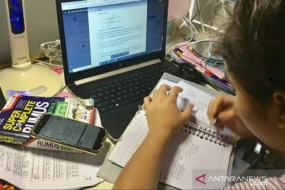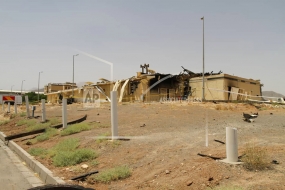
Yuby Suryanto
VOI News: President Joko Widodo (Jokowi) bevestigde dat online leren onderdeel was geworden van de nieuwe norm en verwachtte dat deze ook de volgende norm zou worden in Indonesië. President Jokowi verklaarde tijdens de opening van de virtuele Indonesische Rector Forum (FRI) virtuele conferentie in het presidentieel paleis, Bogor, West-Java, dat online onderzoek een nieuwe norm is geworden en dat dit ook de volgende norm zal worden.
Hij zei dat er verschillende nieuwe normale praktijken zullen zijn die innovatiever en productiever zijn. Het staatshoofd benadrukte het snelle tempo van ontwikkeling in online onderzoek sinds de COVID-19-pandemie alle vormen van persoonlijk leren in het land had belemmerd.
De president is van mening dat Indonesië, en met name de instellingen voor hoger onderwijs, een cruciale les hebben geleerd van de pandemie. Hogeronderwijsinstellingen nemen tijdens een dergelijke crisis een strategische positie in om wetenschap en technologie te ontwikkelen en om productieve en competitieve jongeren te produceren die graag willen vechten voor de mensheid en ontwikkeling in Indonesië, benadrukte hij zoals geciteerd door Antara.
Het staatshoofd heeft er bij de universiteiten ook op aangedrongen om meer aandacht te besteden aan het mentale en fysieke welzijn van studenten.//VOI News/
Een liedje met de titel SAMPAN LAJU KOTE PONTIANAK, gezongen door Abdul Hadi. Dit liedje is gecomponeerd door Abdul Hadi. Dit liedje bestaat uit geestige verzen. De teksten vertellen de mensen van Pontianak die worden bekeken, zodat ze de stad Pontinak niet vergeten en onmiddellijk naar huis gaan om het land op te bouwen. Dit liedje gebruikt Maleis met het Pontinak-dialect. De humoristische teksten begeleid door snelle muziek maken dit liedje zeer aangenaam om te horen.//VOI/irh
Buitenland : Iran bevestigt dat de beschadigde nucleaire locatie een centrifuge-installatie was
TEHRAN, Iran — Iran on Sunday confirmed that a damaged building at the underground Natanz nuclear site was a new centrifuge assembly center, the official IRNA news agency reported.
Iranian officials had previously sought to downplay the fire, which erupted early on Thursday, calling it only an “incident” that affected an “industrial shed.” However, a released photo and video of the site broadcast by Iranian state television showed a two-story brick building with scorch marks and its roof apparently destroyed.
A spokesman for Iran’s nuclear agency, Behrouz Kamalvandi, said Sunday that work had begun on the center in 2013 and it was inaugurated in 2018.
“More advanced centrifuge machines were intended to be built there," he said, adding that the damage would “possibly cause a delay in development and production of advanced centrifuge machines in the medium term.”
He said that the fire had damaged “precision and measuring instruments,” and that the center had not been operating at full capacity due to restrictions imposed by Tehran’s 2015 nuclear deal with world powers. Iran began experimenting with advanced centrifuge models in the wake of the U.S. unilaterally withdrawing from the deal two years ago.
Iran has long maintained its atomic program is for peaceful purposes.
An online video and messages purportedly claiming responsibility for the fire were released Friday. The multiple, different claims by a self-described group called the “Cheetahs of the Homeland," as well as the fact that Iran experts have never heard of the group before, raised questions about whether Natanz again had faced sabotage by a foreign nation, as it had during the Stuxnet computer virus outbreak believed to have been engineered by the U.S. and Israel.
The Natanz fire also came less than a week after an explosion in an area east of Tehran that analysts believe hides an underground tunnel system and missile production sites.
Two U.S.-based analysts who spoke to The Associated Press on Friday, relying on released pictures and satellite images, identified the affected building as Natanz’s new Iran Centrifuge Assembly Center. A satellite image on Friday by Planet Labs Inc., annotated by experts at the James Martin Center for Nonproliferation Studies at Middlebury Institute of International Studies, shows what appears to be damage done to half of the building.
Destroying a centrifuge assembly facility could greatly impact Iran’s ability to more-quickly enrich greater amounts of uranium, which would be a goal for either Israel or the U.S.
Natanz today hosts the country’s main uranium enrichment facility. In its long underground halls, centrifuges rapidly spin uranium hexafluoride gas to enrich uranium. Currently, the IAEA says Iran enriches uranium to about 4.5% purity — above the terms of the nuclear deal but far below weapons-grade levels of 90%. Workers there also have conducted tests on advanced centrifuges, according to the IAEA.//(AP)/voinews



